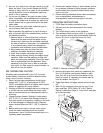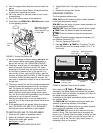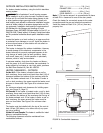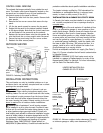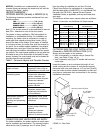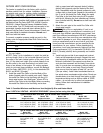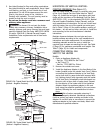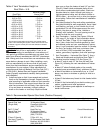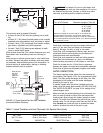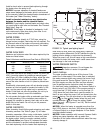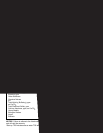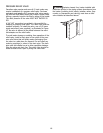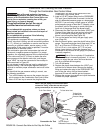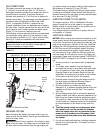
5. Use Listed firestop for floor and ceiling penetrations.
Use Listed thimble for wall penetrations. Use a Listed
roof flashing, roof jack, or roof thimble for all roof
penetrations. Do not fill the space around the vent
(that is, the clear air space in the thimble or
firestop) with insulation. The roof opening must be
located so that the vent is vertical.
6. Do not run the heater vent into a common vent
with any other appliance.
7. Fire Hazard. Do not vent the heater
directly into a masonry chimney. Installation into a
masonry chimney must use a chimney liner and must
meet the National Fuel Gas Code, ANSI Z223.1/NFPA
54 and/or CSA B149.1, Natural Gas and Propane
Installation Codes requirements and all local code
requirements.
HORIZONTAL OR VERTICAL VENTING -
POSITIVE
PRES
SURE (See Figure 13)
Vent the heater either horizontally or vertically using one
of the 4-inch Special Gas Vent Pipes listed on Table 5
(Page 14). Install the vent pipe in accordance with local
codes and the provisions of the National Fuel Gas Code,
ANSI Z223.1 (U.S.), or the standards CSA B149.1, Natural
Gas and Propane Installation Codes (Canada), and the
vent manufacturer’s instructions. Do not use a draft hood
with this heater. Use one of the special gas vents speci-
fied in Table 5 (Page 14) for positive-pressure venting of
this heater – do not use any other vent with it. Install the
vent according to the vent manufacturer’s detailed
instructions.
Maintain clearance between the vent pipe and com-
bustible surfaces according to the vent manufacturer’s
instructions and code requirements. Do not place any
insulating materials around the vent or inside the
required clear air space surrounding the vent. See Table
6 (Page 15) for maximum permissible vent lengths. See
Table 7 (Page 15) for Listed vent components.
CONNECTING SPECIAL GAS
VENT TO THE HEATER
Metallic:
1. Order an Appliance Adapter kit:
- Part No. 77707-0086 for Saf-T Vent
®
or Saf-T Vent
®
CI.
- Part No. 77707-0087 for Z-Vent.
2. Remove the outside vent cover.
3. Install the Appliance Adapter in the Vent Body of the
heater (located under the outside Vent Cover). Before
connecting the Appliance Adapter to the Vent Body,
wet a clean cloth or paper towel with isopropyl alco-
hol (rubbing alcohol) and vigorously wipe the socket
of the Vent Body. Immediately wipe the cleaned sur-
faces dry with a clean cloth or paper towel. Repeat
for the exterior of the heater end of the Appliance
Adapter. Attach the appliance adapter to the vent
body using the adhesive specified by the vent manu-
facturer, following the vent manufacturer’s instruc-
tions.
Risk of carbon monoxide poisoning if
adapter is improperly attached. Mechanical connections
(such as screws) can cause cracking and leaks in the
adapter. Do not drill holes or use screws to connect the
appliance adapter to the heater vent body. Attach with
manufacturer’s specified adhesive.
WARNING
WARNING
13
6" (15 cm) Minimum
Clearance to Combustible
Materials
Listed
Termination
Cap
Storm Collar
Flashing
Firestop
Vent
Body
Metal Flue
Collar
Type B Double Wall
Metal Vent Pipe
2731 1296 CAN
Min. 10 Ft. (3.3 M)
Support Vertical
Vent Pipe so
adapter does not
take weight of
pipe. Dispose
of condensate
according to
local codes.
Type B Double Wall
Metal Vent Tee
Condensate
Drain w/trap
Min. 2 Ft.
(.7 M)
FIGURE 12A: Typical Metal Vent Pipe Installation-Canada
(Vertical – Negative Pressure)
6" Minimum
Clearance to
Combustible
Materials
Listed
Termination
Cap
Storm Collar
Flashing
Firestop
Vent
Body
Metal Flue
Collar
Class B Double Wall
Metal Vent Pipe
See Table 4
For Min. Hght.
Min. 8 Ft.
Support Vertical
Vent Pipe so
adapter does not
take weight of
pipe.
FIGURE 12B: Typical Metal Vent Pipe installation-U.S.
(Vertical – Negative Pressure)



